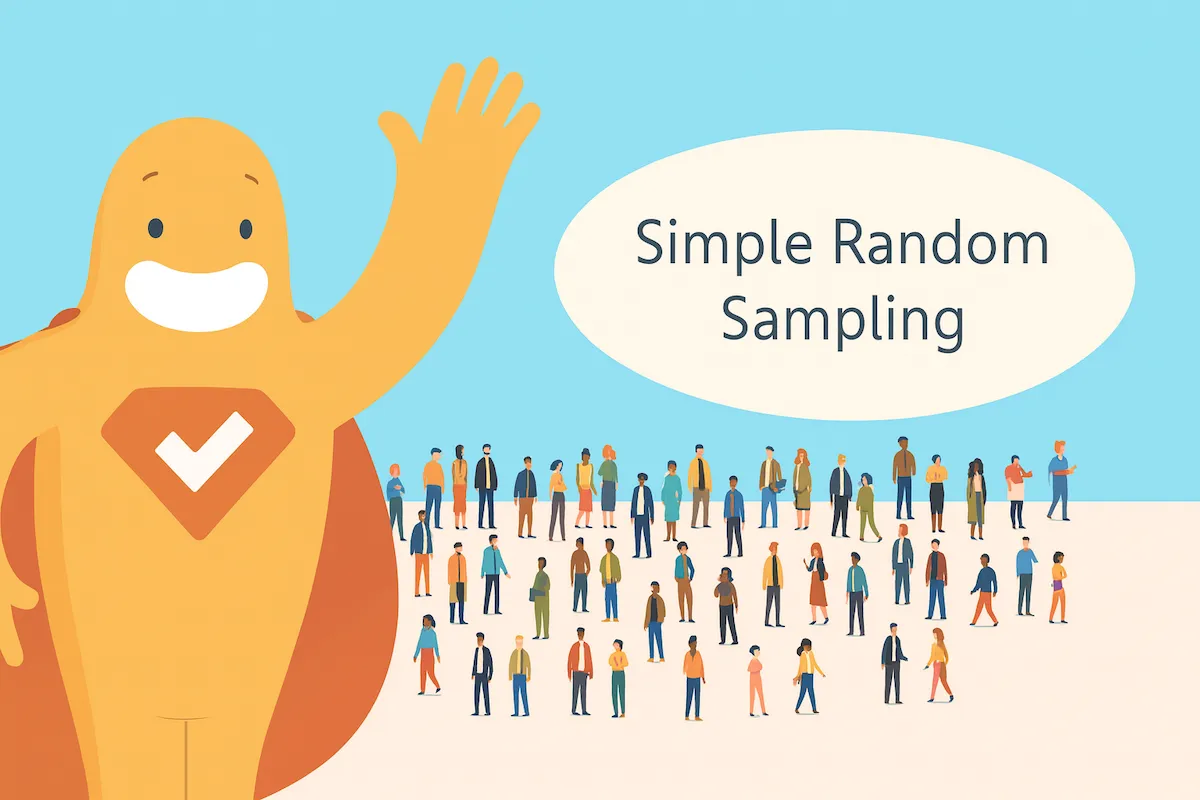“As surveys grow more technologically advanced, older adults may regard data collection practices differently than younger adults, leading to varying rates of participation and response.” This statement by ResearchGate, a commercial social networking site for scientists and researchers to share papers and find collaborators, got us thinking: How do generational differences impact survey participation? We dived into some age studies and looked at the characteristics of each generation to come to some conclusions!
Create your age-based survey, form, or poll now!
Understanding How Generational Differences Impact Surveys
There are currently seven living generations, but only five of which you’re likely to engage with via surveys right now. From the Greatest Generation to the Alpha Generation, here’s a look at each and some generational differences. We also look at characteristics of age groups for surveys that you may be able to use to your advantage.
The Greatest Generation: 1900-1927
Today, only the youngest members of this generation are alive (approximately 350,000 of them). The Greatest Generation weathered the Great Depression and many fought in World War II or contributed to the war effort through their labor. Because they are in their 90s and 100s, marketers rarely target them. Not only that, but an NCBI age survey report states that “Very old people are known to participate less often in social surveys than younger age-groups.” Therefore, they’re not one of the standard age groups for surveys as it may be a fruitless effort.
The Silent Generation: 1928-1945
The children of the Greatest Generation got their name because they were born in an era when “children were to be seen and not heard.” This generation lived through the Korean War, The Cold War, and the Space Race. As with the previous generation, the Silent Generation are less likely to participate in surveys due to their age. The NCBI reports that response rates drop significantly around age 80. Characteristics of the Silent Generation that may inform your surveys:
- They were raised to respect authority, so consider taking an authoritative tone in your survey instructions and questions.
- Most do not like when people “rock the boat.” Again, by taking an authoritative tone they may be more likely to submit to the survey rather than push back.
- They are typically not technically advanced, so other types of surveys, such as a telephone or mail-in survey, may garner better results.
Baby Boomers: 1946-1964
Almost exactly nine months after World War II ended, 3.4 million babies were born, ushering in the “baby boom” and the prosperity of the 1950s. The majority of Boomer children were middle-class suburban kids who bought into all kinds of consumer crazes. In their 20s, some baby boomers began to resist consumerist suburbia and instead fought for social causes while others organized demonstrations against the Vietnam War or experimented with drugs and practiced “free love.” Characteristics of Boomers that may inform your surveys:
- Growing up in disciplined households, most Boomers prefer structure although they will question authority if they don’t agree with the status quo. Because they value structure, carefully consider your survey design.
- They will voice their opinions if they feel something violates their personal values or perspective. So, present the survey as an opportunity for them to have their voice heard on different matters.
- Boomers compete to improve themselves and grow personally. That means an incentive may not necessarily get them to take a survey; try to engage without an incentive first, saving money, and if that is unsuccessful repeat with a reward.
- Baby boomers know how to keep their minds focused on a particular subject or topic and generally have amazing attention spans. So unlike other generations, you can often get away with longer survey questions and a greater number of them, making Boomers part of the best age group for surveys.
Generation X: 1965-1980
Gen X is a much smaller generation than those coming immediately before and after. They are individualistic and refuse to be defined, which is the reason for the X. In fact, Pew Research reports that many Gen Xers believe they are the least distinct generation). Gen Xers are often described as cynical, but they’re also self-sufficient and resourceful; growing up at a time when divorce rates were at an all-time high, many were unsupervised and taking care of themselves before adulthood. Characteristics of Generation X that may inform your surveys:
- Gen Xers are more direct than newer generations and appreciate open and honest conversations; they don’t care about niceties. When surveying Generation X, communicate in a concise and direct manner. Don’t beat around the bush – tell them why you’re surveying them and what’s in it for them.
- They are the first generation to grow up with personal computers so they are quite tech-savvy. However, they aren’t attached to their phones like the latter generations and prefer using email to communicate. To reach Gen X, forgo pop-up surveys and social media surveys; instead, try emailing them first.
- Many grew up in the aftermath of the Watergate scandal and the Vietnam War, a period when distrust of authority was high. That led to skepticism that persists to this day. This means they may believe you have ulterior motives for surveying them. So again, be very direct with the intentions of the survey.
- They are time-bound and finish tasks within deadlines. For surveys, that means carefully thinking out your questions and removing any unnecessary or redundant questions, as they’ll feel you’re wasting their time.
Millennials: 1981-1995
The majority of Millennials came of age at the turn of the century, and 9/11 had a profound impact on many of them. This generation was witness to major technological growth and development at a young age. They may come across as self-absorbed and attention-seeking (they are the “everybody gets a trophy” generation after all), however, they’re also more progressive, creative, and far-thinking than earlier generations. Many in this generation are also passionate about social causes, with many Millennial entrepreneurs also finding ways to give back. Characteristics of Millennials that may inform your surveys:
- Many Millennials identify as being more concerned with intrinsic and moral values over extrinsic and material ideologies. So while a cash incentive may not inspire them to take a survey, a survey that donates, say, $1.00 per survey to a worthy cause may be right up their alley.
- They have an intuitive knowledge of technology so an online survey is well-suited to them.
- In a recent study, nearly half of all Millennials said they’re more likely to engage with a company if they know the people behind it. When sending your survey, it may help to let them know who you are, why you’re conducting the survey, and how answers will be used to gain their trust and build a relationship. Include links to your company website and social pages so they can learn more about you.
- 70% of millennials rely on YouTube to gather new information or to learn how to do something. You could capitalize on this by incorporating content within your survey that teaches them or passes on knowledge.
Zoomers (Generation Z): 1996-2010
Generation Z finally acquired their moniker “Zoomer” as a contrast to Boomers. While aging Boomers are notoriously critical of societal change, Zoomers are the opposite, embracing and pushing for positive change in the world. It’s important to remember that while the oldest of this generation are in their 20s, the youngest are still in grade school, and their attitudes may still change in the years to come. Characteristics of Zoomers that may inform your surveys:
- Growing up in a completely digital world, Zoomers embrace social media and other forms of communication. So, think outside the box when it comes to how you’ll reach them (avoid simply emailing them)
- Like their parents (Gen X), Zoomers are skeptical and not willing to accept the status quo and modern leadership at face value. As with their parents, then, it’s best to be honest and forthcoming about the survey’s intentions.
- Zoomers are the most diverse generation in the United States and are reshaping the way society thinks about diversity and sexuality. Be careful how you word your questions. This generation can become easily offended if they think you’re dismissive of a particular group or non-inclusive with your answers. Keep this in mind when developing questions, especially demographic questions.
- They were born in the age of “instant gratitude” with everything just a tap away. So, make your survey easily accessible and consider offering an instant reward, such as a coupon code at the end of the survey. Mailing a gift card that they have to wait for will not be a motivator.
Generation Alpha: 2011-2025
The newest generation, some of whom haven’t even been born yet! While it’s too early to say what characteristics will define this generation, be sure to keep them on your radar in the years to come!
How Age Groups for Surveys Impact Participation
We discussed some ways that you may be able to use the characteristics of different generations to your advantage. Here is some additional insight on generational differences to consider when creating your next online survey.
Generational Differences: Preferred Method of Surveying
Older generations are less likely to engage in surveys in general. They are even less likely to participate in online surveys since 25% of this group doesn’t use the internet. In-person interviews, telephone surveys, and mail-in surveys may be a better option (this is one of the few times online surveys can present a disadvantage).
Boomers are more likely to take an online survey but they’re also more likely to participate if it comes in the form of an email; this is also true for much of Generation X and some Millennials. Younger Millennials, Zoomers, and more than likely, the Alpha Generation, are much more comfortable with other types of online surveys that don’t arrive in their email.
Generational Differences: Desire to Remain Anonymous
Will keeping your survey anonymous generate better response rates? According to Pew Research, the Zoomers and the youngest members of the Millennial generation are the most likely to take steps to be hidden online. More than 40% of survey respondents in this age bracket abandoned a website when it asked for their real name. Approximately the same number would create a phony username or email address. In contrast, older Millennials and Gen X left websites asking for their name in smaller numbers, at about 35%. The majority of Boomers and older generations only clicked away 29% of the time when asked for their name.
So, if you’re targeting Zoomers with your survey, it may be in your best interest to make it anonymous (or at least provide the option to not leave a name or email address). If you’re going after older generations, anonymity is less likely to be a factor in whether they will engage with the survey or not. Lastly, Pew notes that the preference for anonymity also increases with higher education. Those who never attended college are more likely to continue using a website even if it asks for their name. Those with higher education will not. This adds up since older generations are less likely to have attended college than younger people.
Generational Differences: Privacy Concerns
This may seem to go hand-in-hand with anonymity, however, there is a difference. While Zoomers are less likely to share their real name, they are less concerned with how you retain, store, and use their personal information once they provide it. On the other hand, studies show that those 55 and older are more likely to provide their name, but also more likely to be concerned about their information being stored, used for marketing purposes, or sold to third parties. So, be sure to state what you intend to do with their survey data.
Generational Differences: Survey Length, Question Length, and Question Order
Millennials and Zoomers have short attention spans. They get all the information they need, instantly, no matter where they are or what they’re doing. They also communicate instantly with others via mobile and social media. So, a short survey is going to get more participation than a lengthy one (this is probably one reason for the increase in microsurveys).
Question order is also important when surveying them; their young minds are likely to remember the questions that came before. Now, older adults may have longer attention spans and will engage with lengthier questions, but memory declines with advancing age. CBS News reports that in theory, older adults are less likely to keep the details of the prior question in mind when they answer the next one. Therefore, question order may not be as important when surveying them.
Of course, if you’re looking for all age groups to participate in your survey, a best practice would be to limit questions to the necessities and structure question order appropriately.
Conclusion
Today, the majority of the population is online regardless of age. Statista reports that 99% of 18-29-year-olds in the United States are internet users; 98% of 30-49-year-olds are internet users; and 96% of 50-64-year-olds are internet users. Unsurprisingly, the 65+ crowd was less likely to be online, but at 75%, the majority are engaging with the internet. So, online surveys are ideal for reaching most age groups regardless of generational differences.
Of course, it’s important to keep generational characteristics in mind when creating your survey. Now that you have a better understanding of generational differences in survey participation, are you ready to create your survey? Whether you target Boomers, Zoomers, Xers, Millennials, or others, SurveyLegend has pre-designed templates available so you can start now. They’re secure, responsive, and sure to make an impression on any generation! Get started today.
Have you noticed generational differences in your surveys? What is the typical age range for surveys that you conduct? Which age group for surveys seems most engaged? We’d love to hear from you in the comments!
Create your age-based survey, form, or poll now!
Frequently Asked Questions (FAQs)
The Greatest Generation, The Silent Generation, Baby Boomers, Generation X, Millennials, Zoomers, and the Alpha Generation.
Yes. As people age, they often become less likely to engage in surveys. Characteristics that define different age groups also impact how they respond to surveys.
Nearly 100% of Zoomers, Millennials, and Gen X use the internet, and most Boomers do as well. It’s only after age 65 that internet usage drops off; even then, the majority (75%) are active online. Therefore, online questionnaires and surveys are a good way to reach all ages.



